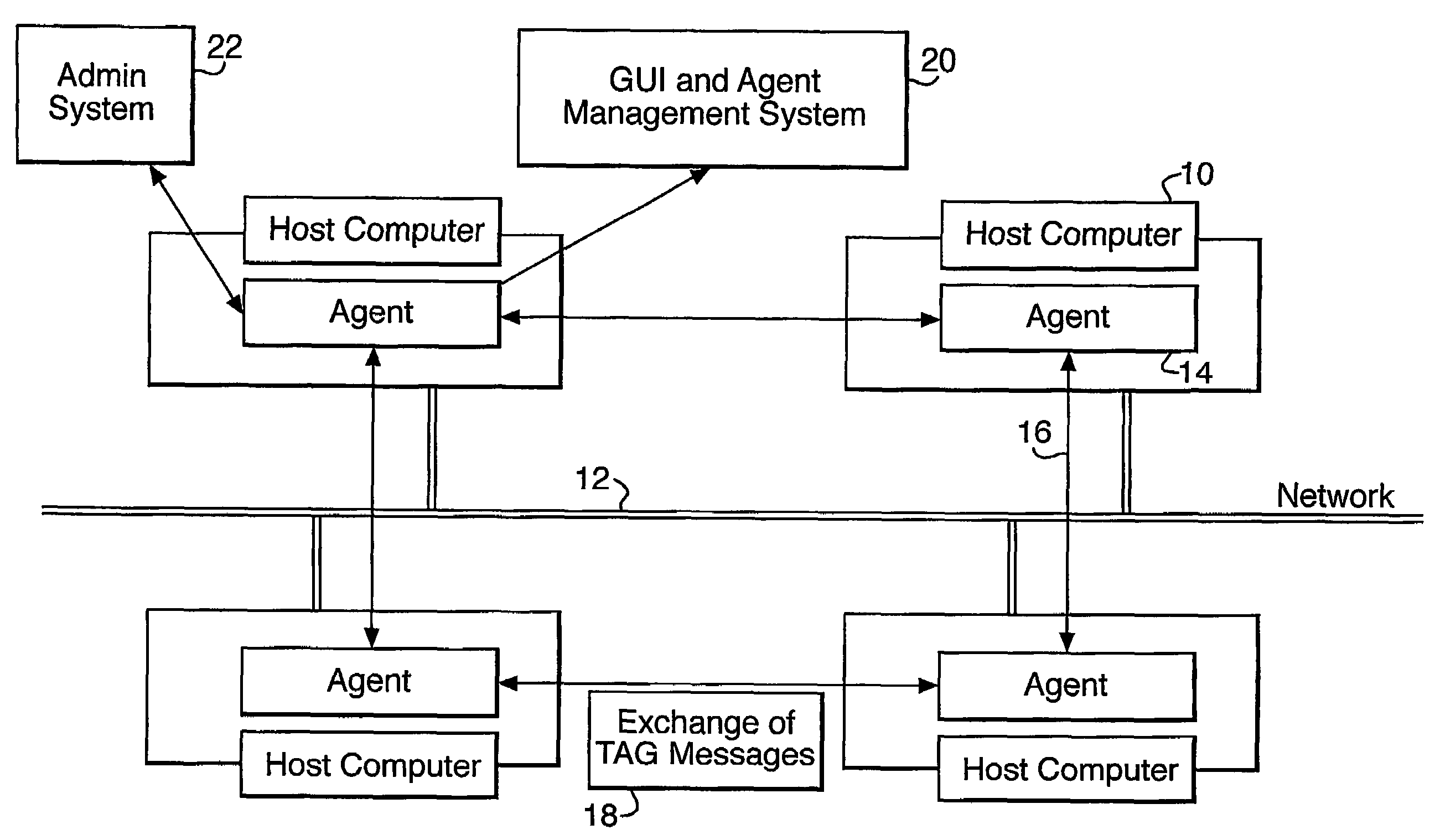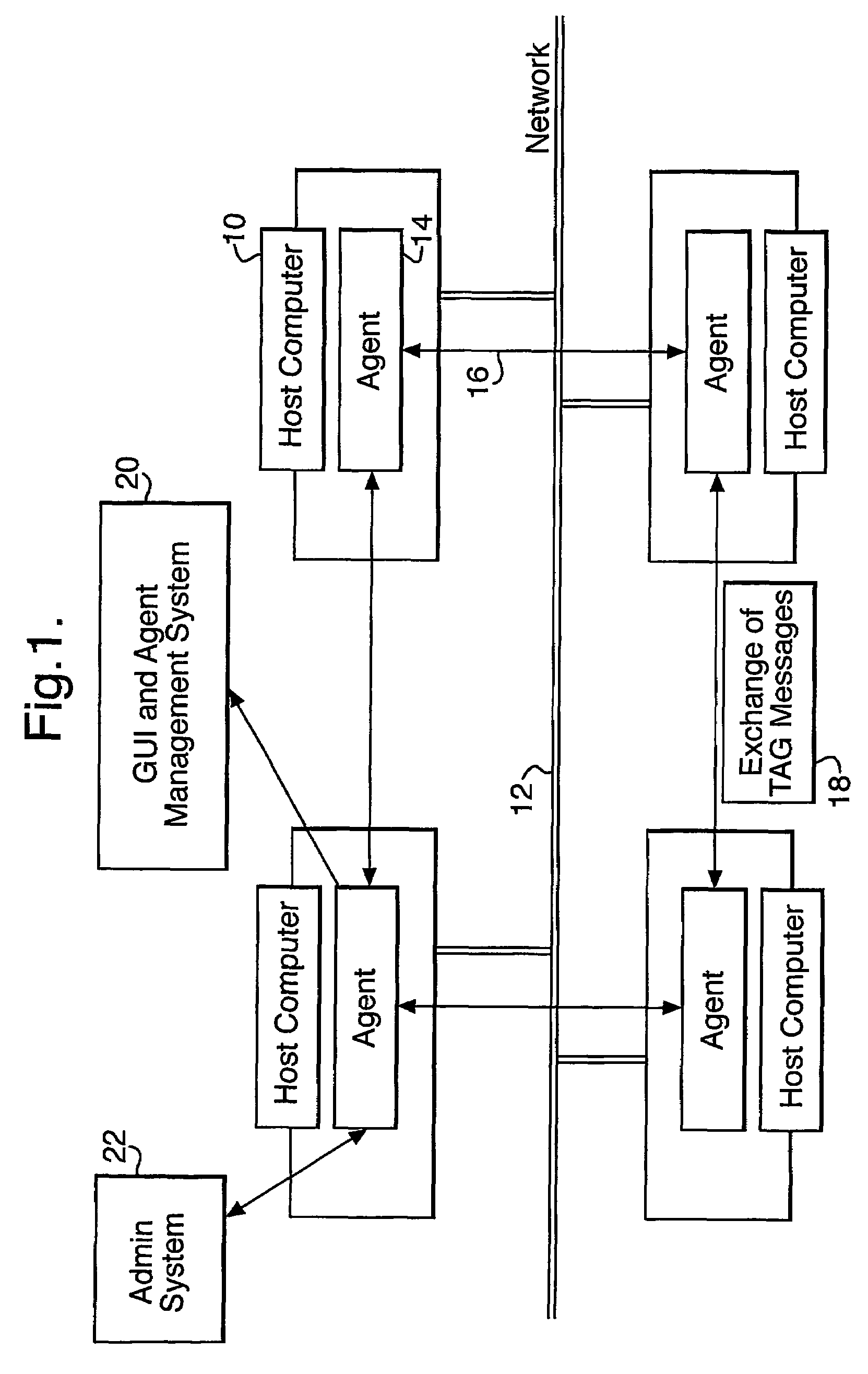Agent-based intrusion detection system
a technology of intrusion detection and agent, applied in the field of intrusion detection systems, can solve the problems of insufficient flexibility, scalable or reactive systems, and inability to effectively deal with new and potentially unknown security threats, and achieve the effects of improving system robustness and security, facilitating connection, and low message overhead
- Summary
- Abstract
- Description
- Claims
- Application Information
AI Technical Summary
Benefits of technology
Problems solved by technology
Method used
Image
Examples
Embodiment Construction
[0030]A schematic view of a practical embodiment of the invention is shown in FIG. 1. The system is designed to protect a number of host computers 10 which are linked together by a network 12. This is achieved by a population of distributed software agents 14, residing on the host computers, and acting as smart monitors of hostile behaviours, attacks or intrusions on the network.
[0031]The agents communicate with each other by exchanging tag messages 18 (to be described in more detail below) which served not only to allow information exchange but also to enable agents to identify one another. Agent to agent communication takes place not via the normal network channels but across a virtual private network 16. Since virus and other security threats will not normally have access to the virtual private network (which is protected by encryption), the agents can monitor viral and other activity on the public network communication channels without themselves being compromised. The virtual p...
PUM
 Login to View More
Login to View More Abstract
Description
Claims
Application Information
 Login to View More
Login to View More - R&D
- Intellectual Property
- Life Sciences
- Materials
- Tech Scout
- Unparalleled Data Quality
- Higher Quality Content
- 60% Fewer Hallucinations
Browse by: Latest US Patents, China's latest patents, Technical Efficacy Thesaurus, Application Domain, Technology Topic, Popular Technical Reports.
© 2025 PatSnap. All rights reserved.Legal|Privacy policy|Modern Slavery Act Transparency Statement|Sitemap|About US| Contact US: help@patsnap.com



